You probably have a food storage plan ready to go with a variety of food stocks, redundancy and shelf life all taken into consideration. No doubt there is a high probability that you have an assortment of canned goods, MREs, freeze dried and dehydrated foods all sitting nicely on shelves somewhere in your basement. All of these things took quite a bit of work to assemble and pay for but in your opinion (and mine too) it is all well worth it because when T-SHTF you will be ready. While all of that preparation is commendable have you ever considered some of the food which most likely resides either in your back yard or within walking distance throughout your subdivision? Have you considered that quite possibly you have been exterminating, pulling and tossing or simply overlooking the wild edibles which nature freely provides a few paces beyond your doorstep? Next time you go outside take a walk through your yard and surrounding areas and you’ll be surprised at what you find. Unfortunately we are conditioned to believe that if food doesn’t come pre-packaged and labeled in a supermarket aisle it should not be consumed, yet nothing could be further from the truth. Check out some of these wild edibles which you probably have been stepping on for quite some time.
Dandelion
Dandelions can be eaten raw, the leaves and flower can both be consumed in a salad and the roots can be roasted and brewed into dandelion tea. I’m not a big fan of the flavor because the flowers are rather bitter in my opinion.
Ox-eye Daisy
The Oxeye Daisy grows like a weed is yards and gardens. The leaves can be eaten raw and have a lettuce like taste. Once the flowers bloom the leaves can become bitter.
Pennsylvania Bittercress
This plant is a member of the cabbage and mustard family, and as such is related to more familiar plants like kale, broccoli and cabbage. The leaves and stems can be eaten raw or cooked. If left unchecked this plant can take over a lawn very quickly.
Sheep Sorrel
The Sheep Sorrel thrives in fields, grasslands and near moist soil. The leaves are tender and somewhat sour and can be eaten raw or used in tea. The leaves are very distinct, resembling a spear or arrow. Some other wild plants are rather bland, this one is not.
Wild Onion
I picked this plant for years and simply disgarded it before realizing that it could be eaten. I always wondered why the plants had a very distinct smell while digging them up. The leaves and bulbs can be eaten raw or cooked. I’ve done a bit of research on this plant and there are poisonous lookalikes, be very wary before consuming what you think to be wild onion.
A few important considerations.
– Always make sure to wash these plants before consuming them. You never know what creature decided to relieve itself on the plant before your arrival.
– If your yard is sprayed regularly with chemicals by the local lawn guru, do not attempt to eat anything!
– Avoid collecting plants which are next to roads, trash dumps or other suspect areas.
– Cook all plants which are found in overly moist soil or in areas with standing water.
– Try to be 100% certain about what you are eating BEFORE you eat it. When it doubt buy a Field Guide which will assist you in going through the verification process before sticking something into your mouth.
– If you are in doubt, DO…NOT…EAT…IT.
Disclaimer. The information I have shared here today is based on my own personal experience, I would hope that you be very cautious and meticulous in your research before deciding to graze on the greens within your back yard and local subdivision. While nature has provided us with many wild edibles which we can consume there are others out there which are highly toxic and can cause serious damage or even death. For example, the Hemlock can kill a man after consumption quite easily. Safety first, know what you are eating and when in doubt don’t put it in your mouth!

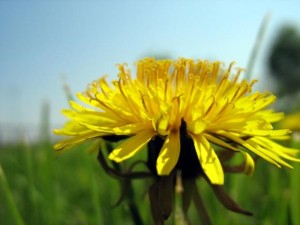
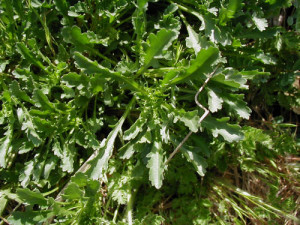
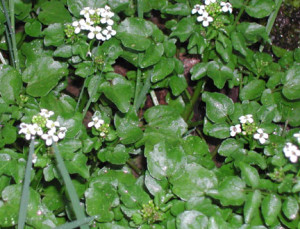
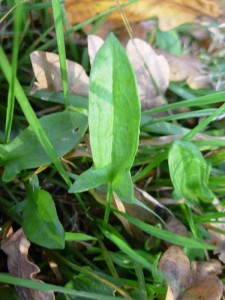
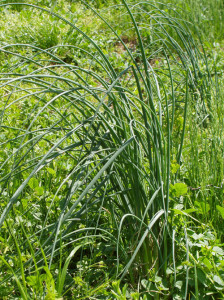








5 comments
Skip to comment form
Hello!
I am forwarding this link to a fellow prepper, the leader of our small group. We were just discussing the topic of learning wild edibles. This is exactly the sort of thing we would be looking for! Please consider joining Fundamental Refounding. We have a ‘Prepare’ category and would welcome information such as this! http://fundamentalrefounding.ning.com/forum/categories/prepare/listForCategory We are still a young site, seeking talented patriots, but never money! If you like what you see, please join us!
Take care,
JG
Author
Thanks for the comment Jerseygalnny. I’ll check out your site here soon.
With the wild onion beware in the south there is a plant (known as crows feet) the on the top looks like wild onion, but will make yall sick, always look for the bulb by pulling it up.
Author
Jim thanks for the tip/clarification, I had no idea such a plant existed.
Most commercially-produced seeds for gardens are hybrids that don’t reproduce well, especially over time! Invest in heirloom seeds! The concept of the ‘forest garden’ is IMHO one of the best ideals because the plants are more likely to reseed themselves year after year and to the uniformed just look like a weed patch. If you have a pond (and you should for food and water storage), then you should plant, among other things, cattails, not only a multi-season food source, a good source of cordage (especially for baskets) but they also help keep a balance in your pond system! Another often overlooked wild edible is grass or more specifically, grass seed; all known grass seed is edible, and most if not all grains (wheat, oats, even corn) were developed from grasses! Be aware that most plants along roads will absorb toxins from vehicle exhaust and leaked fluids, but their seeds when taken and grown (away from the road) are usually fine to consume the resulting seeds/plants. Good Luck and happy prepping! (GLAHP)